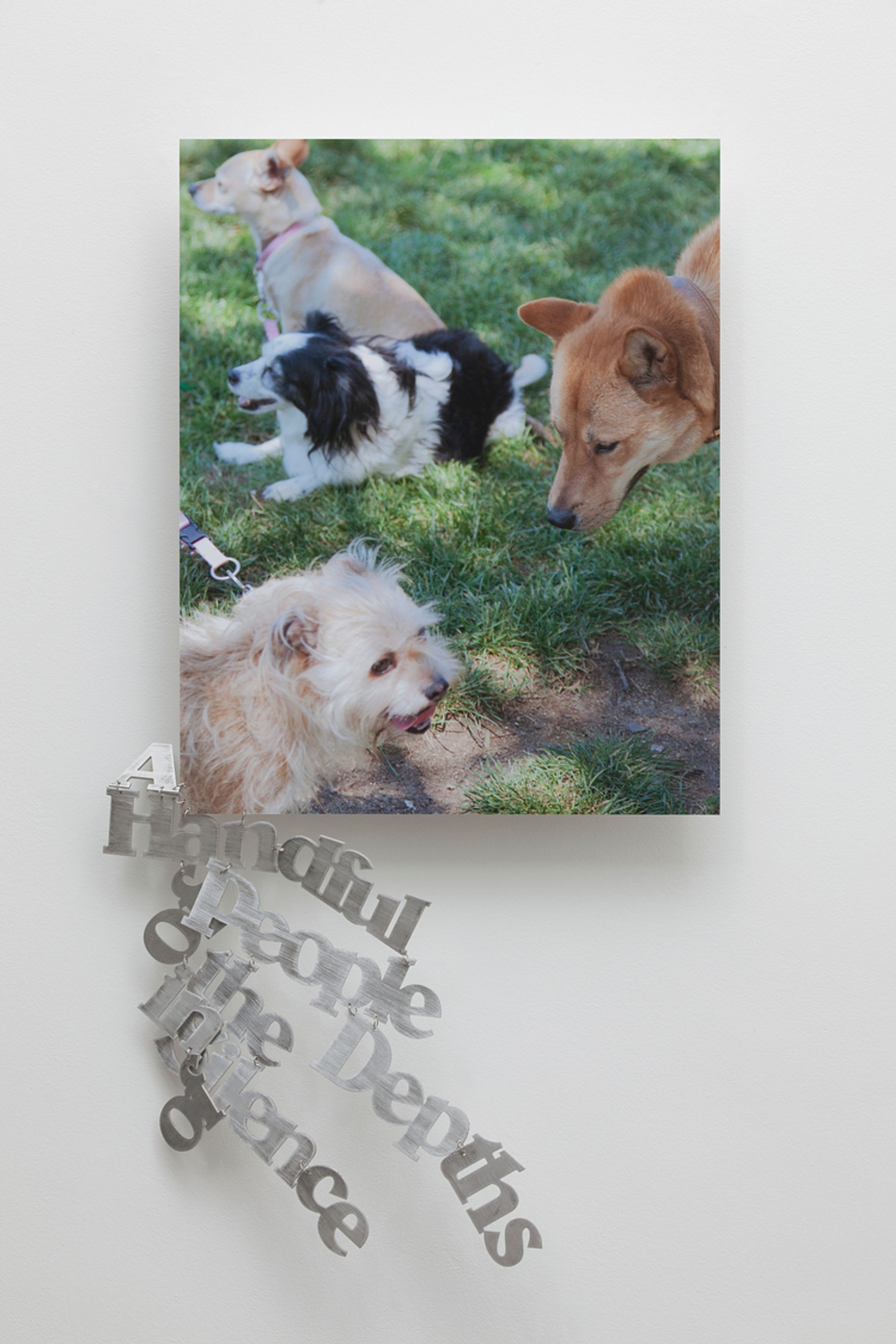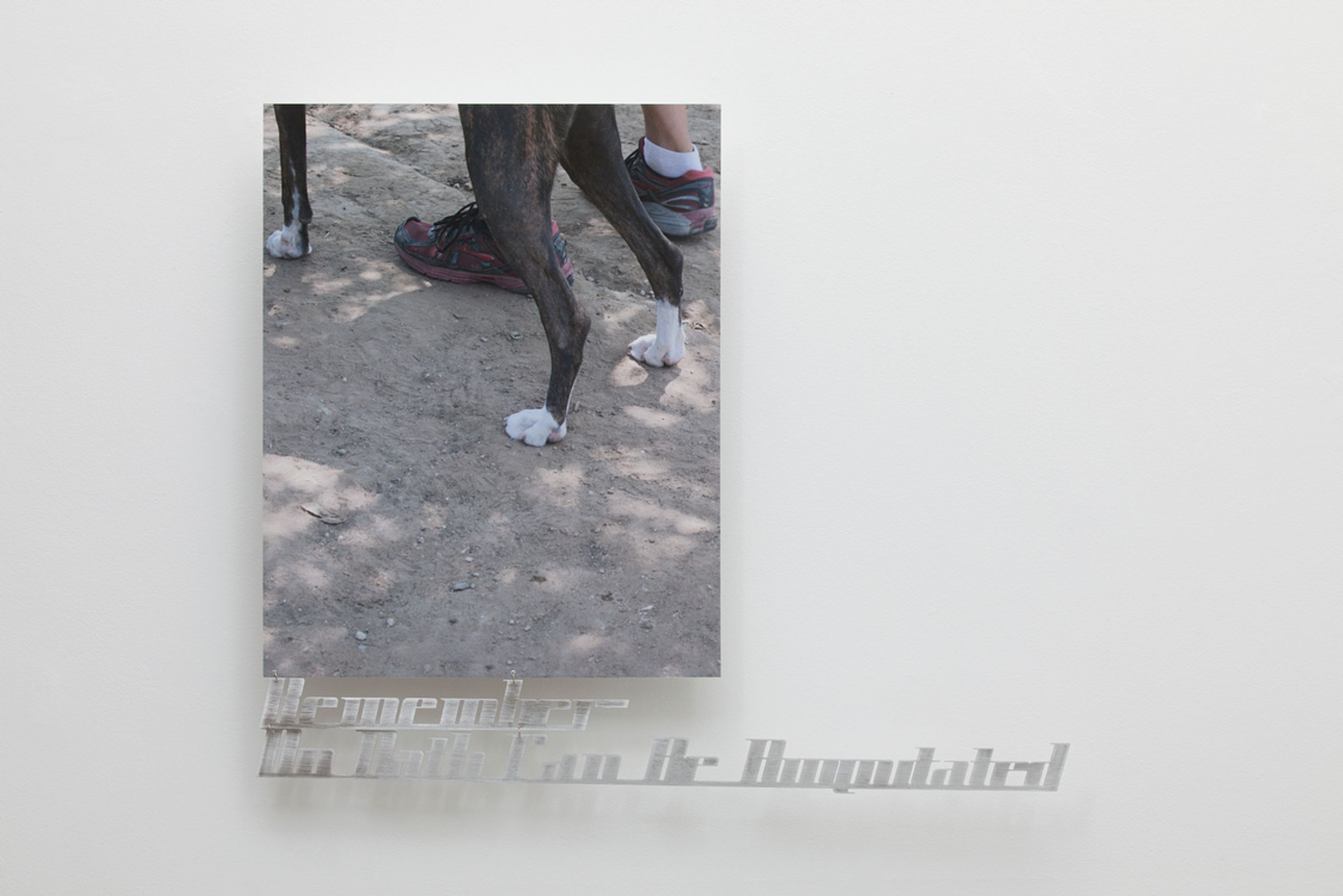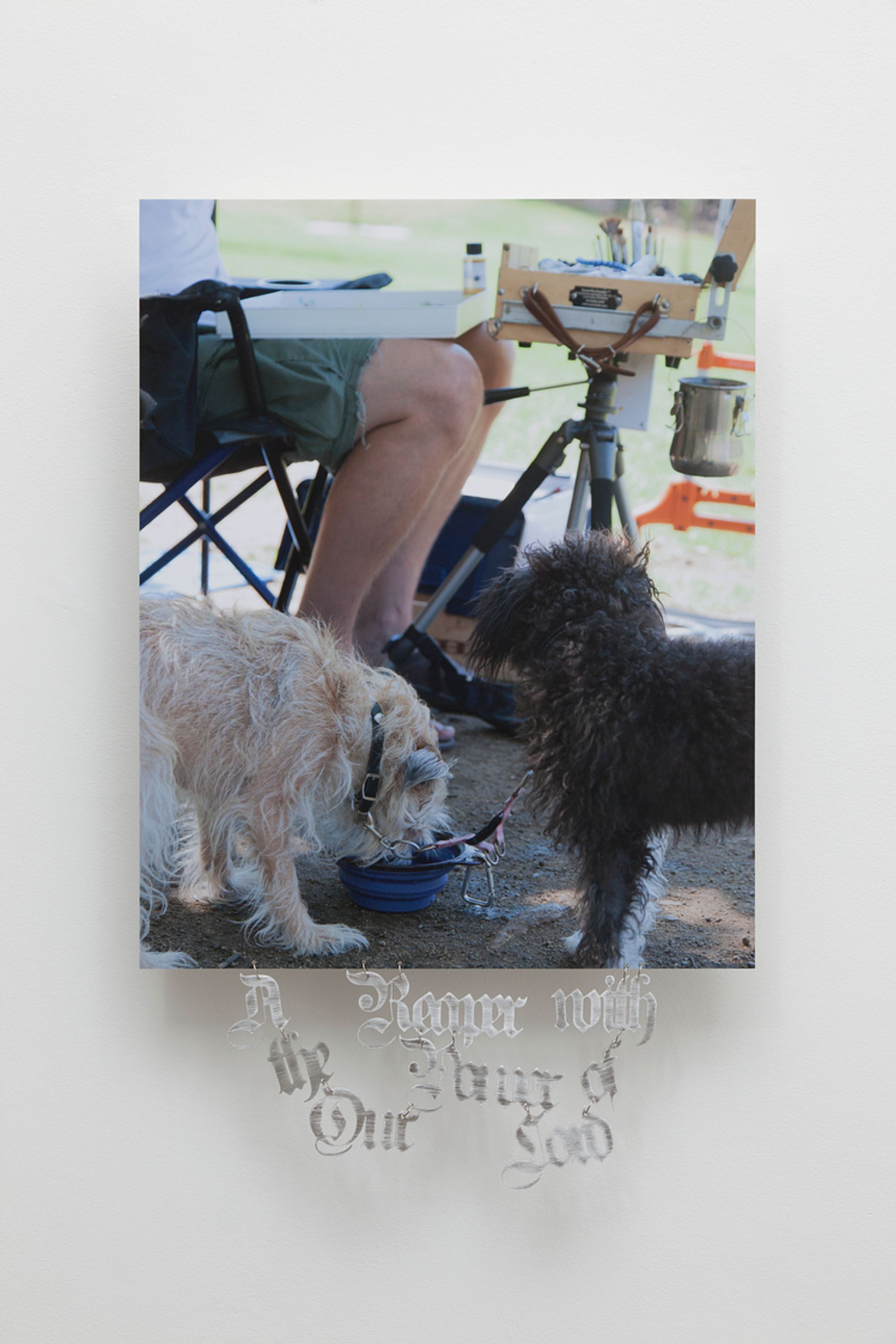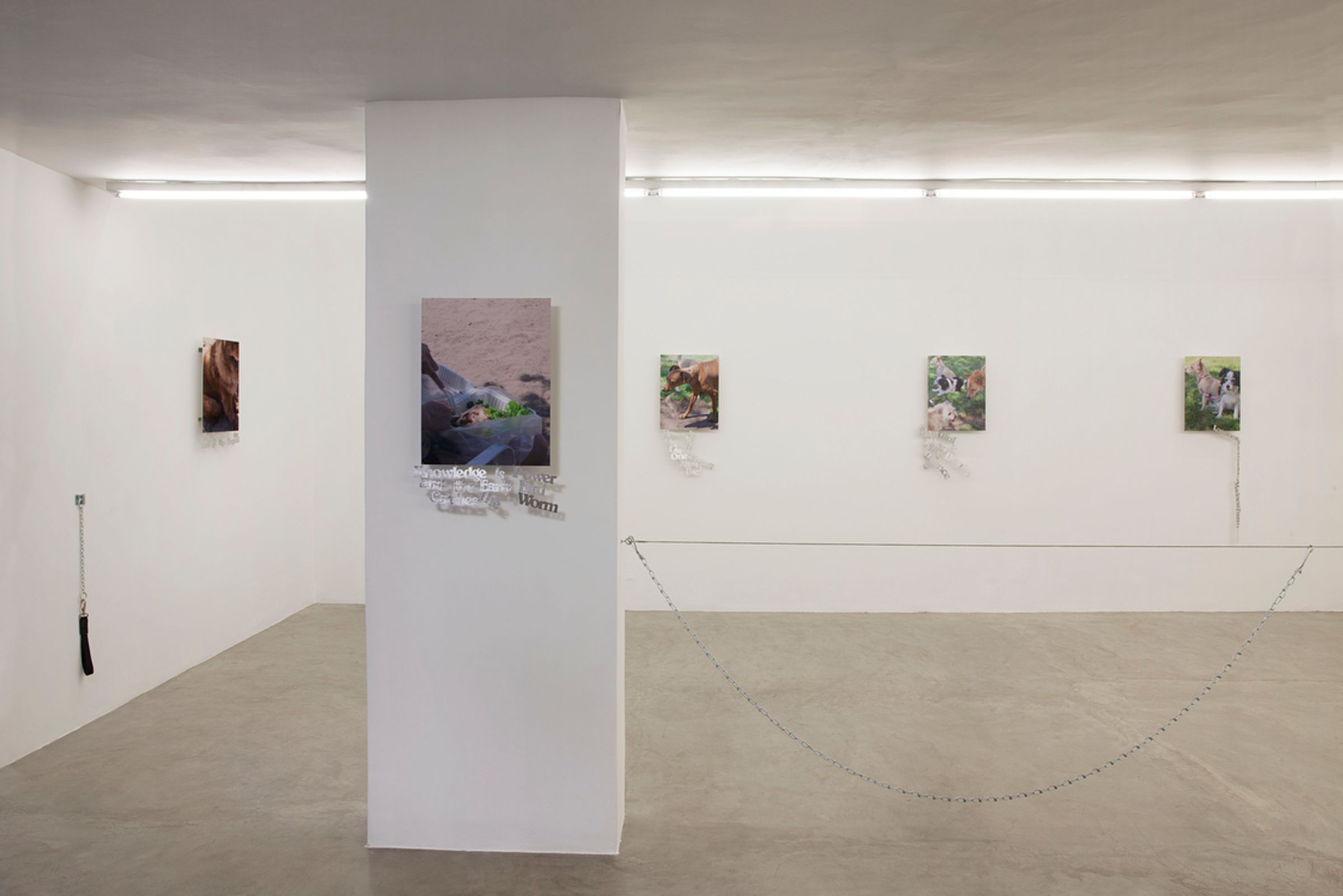2014
You and You're People
Boatos Fine Art, Sao Paulo, Brazil
October 7– November 7 2014


When Franz Biberkopf, the protagonist of Rainer Werner Fassbinder’s Berlin Alexanderplatz (a TV version of Alfred Döblin's original 1929 novel of the same title), is released from jail he struggles with that basic human feeling of guilt when you realize that you should be happy but you’re not. Fear sets in as he looks out at the open world and encounters his freedom again. The cruelty lies in the abstraction of a thing as concrete as prison. The chapter title “Loneliness Tears Cracks of Madness Even in Walls” shows this ambiguity well. The walls are only as thick as loneliness. In the misfiring between word and meaning, being in prison is not the same thing as being imprisoned.
Dena Yago’s “You and You're People” includes 13 images of dogs in a park. The images depict dogs at rest in a fenced-in (fence not depicted) space otherwise meant for exercise and recreation. Chapter titles - themselves markers of pause in a picaresque story that is just as much about process as results - are connected to these images of ambiguous stasis and movement and human-animal relations. “You and You're People” is Dena Yago’s first show to include text in a body of work that continuously contemplates the relation of text to image. Like the multiple dogs represented in the images “Loneliness Tears Cracks of Madness Even in Walls” or “A Handful of People in the Depths of Silence,” image and text make indirect contact and communicate through codes.
“You and You're People” brings to mind the cordel tradition of Brazil’s northeast, where popular books hung in markets on cords. It was the technology of the cord that led to the books’ successes; a formal, non-mimetic, reminder of the accessibility of its content. But here, the promise of movement encounters its limit in the word-things. A metonymic leap, the metallic words are made of the same stuff that binds the images to their frames. The tools of control – leashes and muzzles - are abstracted from the images and materialized again as objects. The failures that the pícaro stubbles upon in narrative are here the discrete parts that bound dizzyingly, mirrored across the room.
-Nathaniel Wolfson













